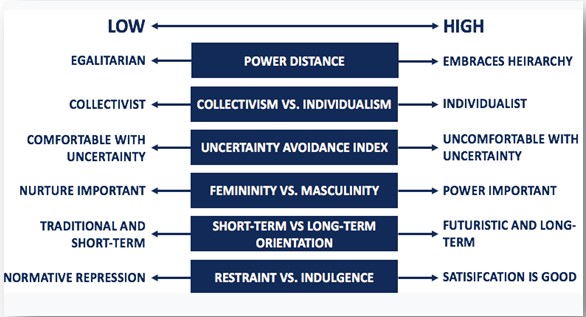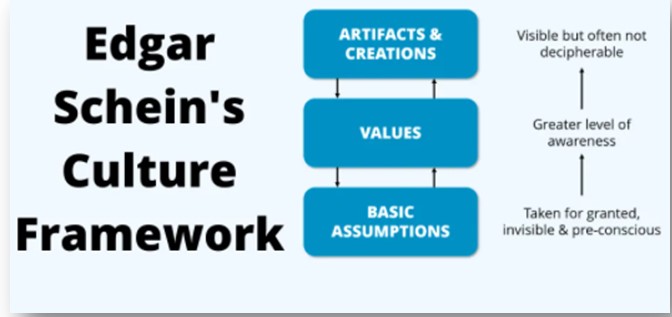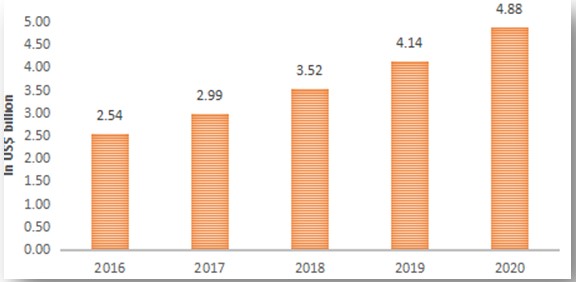Assignment Sample BU7411 International Marketing Strategy
The aim of this report is to provide a clear overview of the potential advantages of India as well as the potential risks for Lucky Saint during an entry into this new market. Differences in the consumer behavior of both the UK and India have been acquired due to huge cultural proficiency.
The company named Lucky Saint wants to enter the market of India to set up its business of Alcohol-free beer. Lucky Saint has acquired a profit of 3.5 million after its opening in the UK due to its non-alcoholic beers (Lucysaint.co.uk, 2021). http://BU7411 International Marketing StrategyThe emergence of the business market in India will provide a positive outcome for Lucky Saint by improving both productivity and profitability.
2. Evaluation of potential Target Market
2.1 Cultural Models
2.1.1 Hofstede model
Hofstede’s cultural model helps in understanding the cultural differences across the countries where business can flourish. This is the reason for choosing the Hofstede model in this report which provided a vast amount of knowledge on the international market strategy. (Kristjánsdóttir et al. 2017).http://BU7411 International Marketing Strategy
The power index in the Hofstede model provides the authority of showing leadership in doing business in India. The company named Lucky Saint wants to expand its business of alcohol-free beer in India.

Figure 1: Hofstede model
(Source: Kristjánsdóttir et al. 2017)
Cultural difference is seen in India among males and females and Lucky saint wants to break the difference by introducing alcohol-free beers in India. The long-term orientation of the workers is essential to growing business in India and for that Lucky,
Saint needs to provide permanent employment. Individualism of the various employees of different cultures is needed to understand the culture prevailing in the Indian Market. This will increase the possibilities of evaluating the business and the market.
2.1.2 Schein’s Model
The model of Schein helps in explaining the concept of culture and its effect on businesses. Cultural knowledge about the target market is very essential as it affects business growth and this is the reason for choosing the Schein model. In order to apply this model, it becomes possible to develop knowledge about the cultural value of India. At the level of the artifact, the analysis of the characteristics can be done and for Lucky Saint, the characteristic was alcohol-free beer (Nakhaei et al. 2019).http://BU7411 International Marketing Strategy Indian culture looks at alcohol in a very negative manner and these beers without alcohol can get good recognition in India.

Figure 2: Schein’s Model
(Source: Nakhaei et al. 2019)
The values level of the model helps in the analysis of the culture prevailing in the business and those cultures are given prior consideration (Nakhaei et al. 2019).http://BU7411 International Marketing Strategy
Lucky Saint wants to bring a new definition of beer into the Indian market and provide a comfortable culture of healthy drinking that does not hurt the values. The final level of assumed values the cultural difference among the workers is analyzed and in India alcohol-free culture is respected which will allow Lucky Saint Beers to flourish.
2.2 Cultural Difference between Home and Target Market
Various cultural diversities are seen in India with a different mindset that provides a great impact on international business. Lucky Saint wants to flourish beers in the Indian market by excluding alcohol and the value of individuals can be managed (Tourky et al. 2020). http://BU7411 International Marketing StrategyThis
alcohol-free beer is a good initiative to keep a check on healthy. In India. The value of the beer market Beer in India is 5533.73 Mn Lts in the year 2020 whereas the beer revenue in the UK is around $25428 million. However, demand for strong beer is high in India and this has delivered many complexities to making a stable market in this country.

Figure 3: Cultural Difference between Home and Target Market
(Source: Samiee and Chirapanda, 2019)
The main problem with introducing alcohol-free beer in the Indian market is the non-availability of the strongness in the beer. Indian market drinkers will not accept non-alcoholic beverages as the demand revolves around strong beers (Samiee and Chirapanda, 2019).http://BU7411 International Marketing Strategy
In the UK people drink beer as refreshments with three various qualities including bitter, brown ale, mild, etc. Lucky saint needs to do a clear analysis of the various cultures as some cultures in India consider alcohol evil.
The target in the Indian markets is the individuals who are trying to move away from alcoholic beverages as it will provide the taste of beer with 0 percent alcohol. Rehabilitation centers in India will benefit from this business as
it will make drinking healthy (Tripathy and Sarangi, 2017). http://BU7411 International Marketing StrategyAs this is free from alcohol it will target the youths and prohibit them from shifting to alcoholic beverages. Lucky Saint will have a scope to flourish if it targets the addicted persons in the rehabilitation centers. The age group that it will target is between 10 to 30 as the young generation is more addicted to the beverages.
2.3 Overview and problems of the discovered market
Indian market drinkers are highly addicted to alcoholic beverages, especially whisky and beer. People in India are highly addicted and have health issues due to alcohol consumption.
According to the reports provided by WHO (World Health Organization), 11 percent of the Indian population are regular drinkers (Karthik and Prasad, 2020). The age that is addicted to alcohol in India is between 10 to 75.

Figure 4: Overview and problems of the discovered market
(Source: Adams et al. 2019)
The Muslim community of India does not drink alcohol and considers it a bad practice. Lucky Saint can enter the Indian market by targeting the rehabilitation centers and the people who do not drink alcohol providing a threat for amendment.
In India, there is a craze for beer among the youths, and introducing the beers of Lucky Saint on college campuses and schools can provide huge benefits. Opportunities for the growth of the business are there in India as the Government of India is concerned about the health of people. This will allow Lucky Saint to do business in the Indian market and gain huge profits (Adams et al. 2019).http://BU7411 International Marketing Strategy
A threat to the non-alcoholic beverage is there as they will contain a lot of calories that can provide huge health issues among the people in India. The profit of the beverage business in India is around 400000 crores which provided a good opportunity for Lucky Saint to flourish.
There is a 100-crore loss by the company paper boat due to Covid and entering the market in the Covid situations can bring losses (Adams et al. 2019). http://BU7411 International Marketing StrategyThe non-alcoholic beverage of Lucky Saint has good as well as bad effects but seeing the bright side of the business it will provide people with the best non-alcoholic beers.
References
Adams, M., Upreti, V., & Chen, J. (2019). Product-market strategy and underwriting performance in the United Kingdom’s property–casualty insurance market. The European Journal of Finance, 25(11), 1012-1031. Retrieved from:
http://orca.cf.ac.uk/119042/1/EJF%20Insurance%20Paper%20%28December%202017%29.pdf
Karthik, T. T., & Prasad, T. R. (2020). SWOT (Strength, Weakness, Opportunities, and Threats) Analysis of Fast Moving Consumer Goods (FMCG) Industries in India. Shanlax International Journal of Commerce, 8(1), 92-100. Retrieved from: https://www.researchgate.net/profile/Ramprasad-Tp-2/publication/350877666_SWOT_Strength_Weakness_Opportunities_and_Threats_Analysis_of_Fast_Moving_Consumer_Goods_FMCG_Industries_in_India/links/6077ea3c881fa114b402d09e/SWOT-Strength-Weakness-Opportunities-and-Threats-Analysis-of-Fast-Moving-Consumer-Goods-FMCG-Industries-in-India.pdf
Kristjánsdóttir, H., Guðlaugsson, Þ. Ö., Guðmundsdóttir, S., & Aðalsteinsson, G. D. (2017). Hofstede national culture and international trade. Applied Economics, 49(57), 5792-5801. Retrieved from: https://www.academia.edu/download/62052173/2017_Kristjansdottir_et-al-Applied-Economics20200210-85121-11555t0.pdf
Luckysaint.co.uk, (2021). About, Available at: www.lucky saint.co.uk [Accessed on: 18.05.2021]
Nakhaei, K., Yazdifar, H., & Faghani, M. (2019). The impact of propagating management accounting innovations on organizational culture. International Journal of Finance & Managerial Accounting, 4(13), 1-9. Retrieved from: https://ijfma.srbiau.ac.ir/article_14308_49d75e9a360d33545f13caff89c397f1.pdf
Samiee, S., & Chirapanda, S. (2019). International marketing strategy in emerging-market exporting firms. Journal of International Marketing, 27(1), 20-37. Retrieved from: https://journals.sagepub.com/doi/pdf/10.1177/1069031X18812731
Tourky, M., Alwi, S. F. S., Kitchen, P., Melewar, T. C., & Shaalan, A. (2020). New conceptualization and measurement of corporate identity: Evidence from UK food and beverage industry. Journal of Business Research, 109, 595-606. Retrieved from: https://ore.exeter.ac.uk/repository/bitstream/handle/10871/36632/Accepted_%20MS%20without%20authors%20details.pdf?sequence=1&isAllowed=y
Tripathy, M., & Sarangi, I. (2017). Exercising Concepts of Virtue Ethics in Business Culture. Journal of Business and Management, 19, 26-31. Retrieved from: https://www.academia.edu/download/55678830/Mitashree_and_Itishri_IOSR.pdf


